The Georgian era began with the death of the last Stuart monarch. Queen Anne died in 1714 without an heir and so the throne passed to 58th in line Georg Ludwig, Elector of Hanover, who most importantly, was a Protestant.
Fifty-seven Catholics were in front of George I in the royal pecking order, but Britain needed a Protestant ruler as the 1701 ‘Act of Settlement’ disqualified Roman Catholics from the crown. They got a man who had divorced his first wife for adultery, locking her away never to see her children again. Thus the dysfunctional Georgians, whose heirs it seems were genetically predisposed to despise their fathers (and fathers, their male heirs) began over a century of dominance of the British royal family.
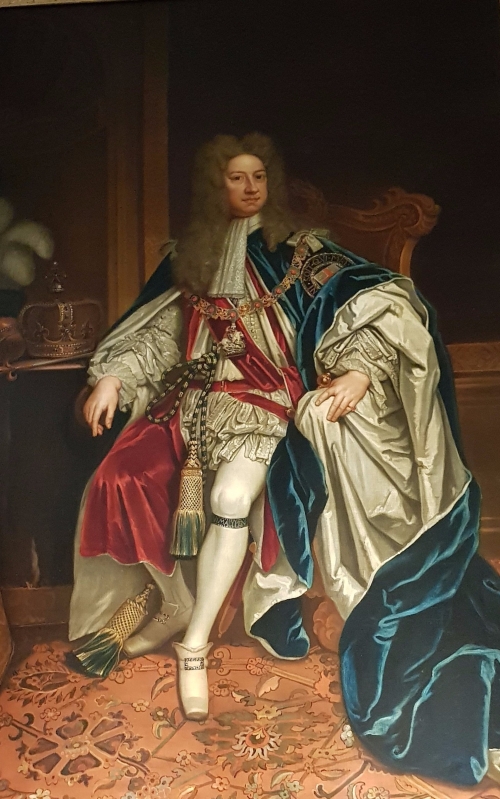
George I was the son of Sophia Dorothea, Electress of Hanover, who was a granddaughter of King James I and VI, through his daughter Elizabeth. Therefore, he found his claim to the British throne through his mother and was the great-grandson of King James I and VI. (King James I of England and King James VI of Scotland – his reign unified the two kingdoms after the death of Queen Elizabeth I.)
George was 54 when he became King, his eldest son, another George, was married to Caroline of Anspach. George and Caroline, along with George I, travelled to England with their two daughters in 1714 but left behind their eldest son, Frederick, then aged 7, in Hanover.
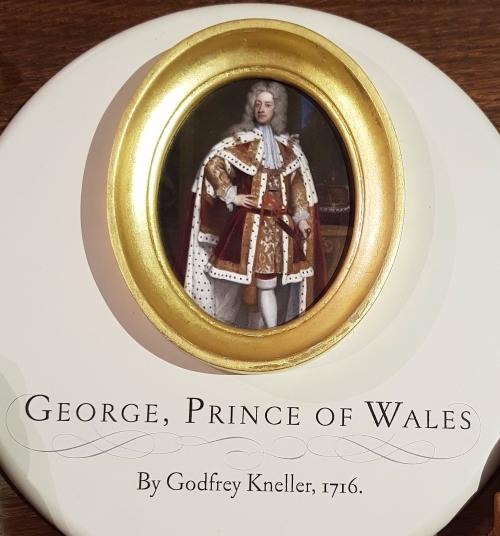
The early Georgians inhabited Hampton Court Palace, along with their other English residences, perpetuating the royal presence that began with the Tudors and had continued with the Stuarts.
The Georgian Story at Hampton Court Palace explores the early Georgian reign at Hampton Court Palace.
The Georgian State Apartments begin at the Guard Chamber. Visitors to the King would have to pass the inpection of the Yeoman of the Guard. These intimidating bodyguards were dressed in scarlet Tudor-style uniforms and carried pikes (long spear-like weapons) and were charged with refusing entry to the King’s quarters of anyone considered undesireable.
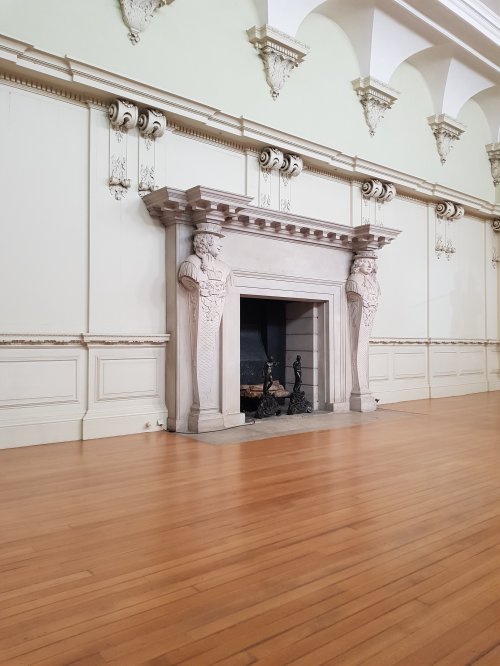
George I spent the summers of 1717 and 1718 at Hampton Court Palace. The King’s Public Dining Room demonstrates a Georgian table and describes how the King would dine in public twice weekly. It was a popular event and as a measure of crowd control benches and railings were introduced. French food was fashionable and was frequently served, German specialities were occasionally presented to the King on gold and silver plate.
George I frequently returned to Hanover, leaving the Prince and Princess of Wales (George and Caroline) at home in England. They would hold court in the Privy Chamber meeting foreign dignatories and accepting gifts from around the world.
The State Bedchamber is undergoing conservation at present. Queen Caroline’s state bed has been stripped back to the mattresses, whilst the fabric undergoes delicate and painstaking work to ensure that it remains intact for it to be enjoyed in years to come. It was in this room that the Prince and Princess of Wales (George and Caroline), would receive courtiers in the morning ceremony called the levée, from around 1715. The guard rail that helped keep the crowd back during the levée was used by George I, Charles II and was probably made for Queen Henrietta Maria, the wife of King Charles I, the mother of Charles II.
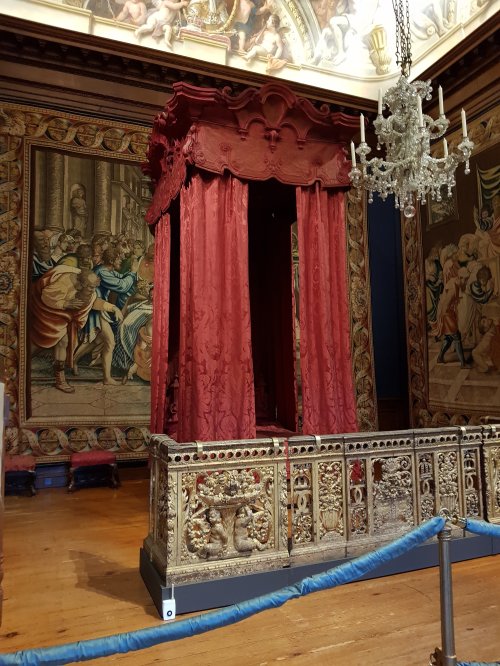
The Queen’s Gallery was a space used for private entertainment by the royal family and was the last room in the formal State Apartments.
You then enter the Private Bedchamber, which leads to the Private Dressing Room. Here Queen Caroline would bathe, wearing a modest linen shift, believing that washing was good for the health. Her shift also covered her painful hernia, a protuberance that worsened as she aged.
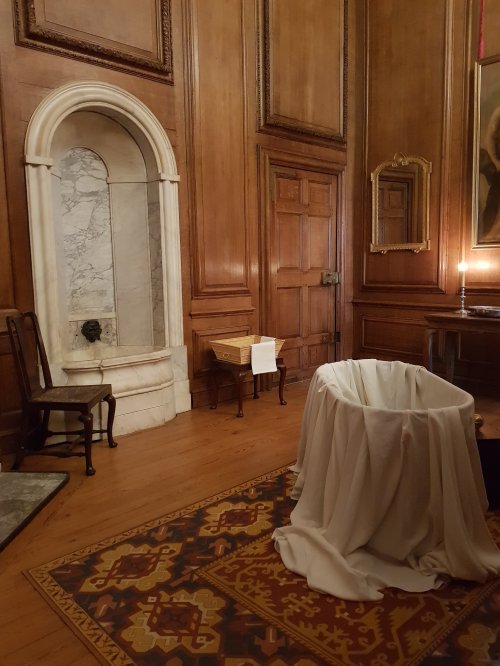
In the Private Dining Room, King George II and Queen Caroline would entertain family and guests. Their son Frederick had joined the family in 1727 after George I’s death. He was made Prince of Wales and his wife Augusta, Princess of Wales.
One of the most bizarre stories of the feuding Georgians began at Hampton Court Palace, when a pregnant Augusta went into labour. Instead of informing his parents, who were expecting to witness the birth at Hampton Court, Frederick placed his wife in a carriage and fled to St James’ Palace through the night, where their daughter, named Augusta, was born. A furious Queen Caroline labelled the poor child ‘ugly’.
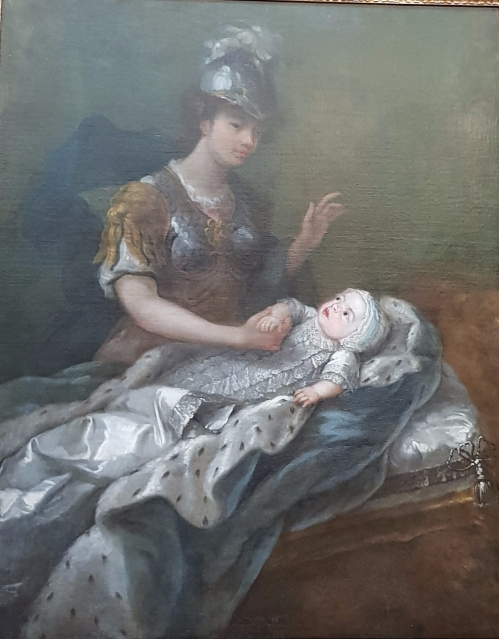
The Oratory was Queen Caroline’s prayer room. In here is displayed a portrait of the ‘ugly’ Princess Augusta being cradled by Britannia. This 1737 portrait was a piece of Georgian propaganda, demonstrating that this child was born in Britain emphasising her Britishness and somewhat removing her from her Hanoverian forebears.

George I (Reigned 1714 – 27)
George I had no queen
George II (Reigned 1727 – 60)
George II’s queen was Caroline of Ansbach
Frederick, Prince of Wales, son of George II and Queen Caroline, was married to Augusta of Saxe-Gotha, the parents of George III
George III (Reigned 1760 – 1820)
George III was married to Charlotte of Mecklenberg Strelitz
George IV (Reigned 1820 – 1830, Regent from 1811)
George IV was married to his cousin Caroline of Brunswick
Reference:
Historic Royal Palaces




A very enjoyable read. You are a great story teller.
LikeLiked by 1 person
Thank you 😁
LikeLiked by 1 person
Nice to see you blogging. Have you been completing a big project?
LikeLiked by 1 person
Not really. I started a new job that comes with a heavy-duty course. I’m in the midst of that. Plus I’ve been cooking and exercising during the evenings and that reduced my time to blog and I’ve also been reading novels! I’m trying to pick up a slower rythymn to keep up the blog along with my coursework.
LikeLiked by 1 person
Fascinating bits about the Catholics and the ugly baby.
LikeLiked by 1 person
The awful thing is, Queen Caroline comes across as an intelligent person, I went to a fascinating talk on her at Kew Palace a few years ago, yet she was just as nasty as her husband about Frederick. It was all rather strange, it probably didn’t help that they left him in Hanover, essentially they had no relationship with him.
LikeLiked by 1 person
This was fascinating. I’ve become much more interested in this type of history this year!
LikeLiked by 1 person
Thank you and fabulous! I love public history and having access to historic homes is such a big part of that 🙂
LikeLike
Very cool history! Any reason why Frederick fled to St James’ Palace during Augusta’s labor, or is this one of those “lost to history” kinds of things?
LikeLiked by 1 person
I think it was spite- he didn’t get on with his parents and they wanted to witness the birth. It was a royal thing to ensure no imposter babies! So his poor wife suffered so he could remain in control.
LikeLiked by 1 person